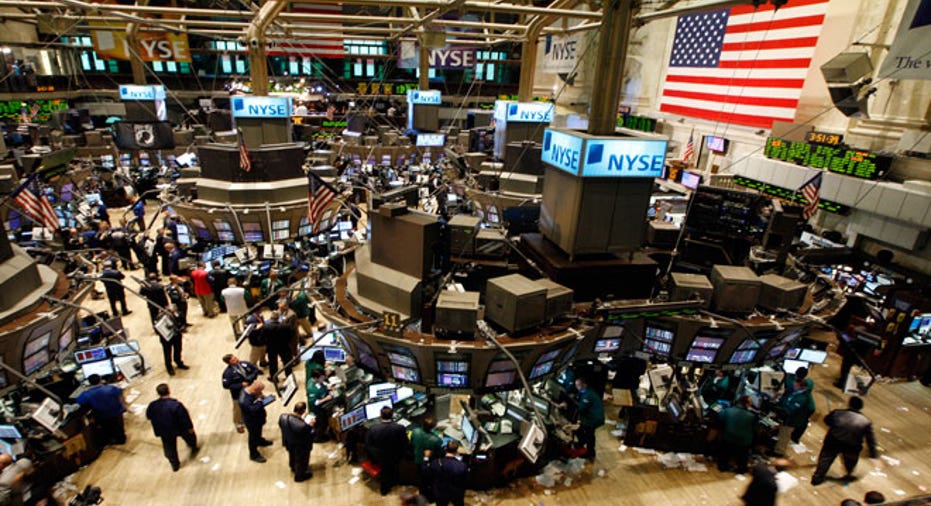Dig Industrial Stocks in an Improving Economy?

Producing concrete, construction equipment and rock salt sounds mundane. But investing in these companies can cement gains for investors who can stomach cyclical stocks.
Because some industrial firms involved in transportation, construction and steel have staked out special, capital-intensive niches, they face less competition. So, they fare well when the economy is cranking ahead. Industrial stocks even outperformed buzz-worthy sectors such as real estate and communications last year, according to independent investment research company Morningstar.
Compare brokerage accounts at Bankrate.com.
However, many industrial stocks are still selling at reasonable valuations in a pricey stock market, says David Ott, a partner at Acropolis Investment Management LLC in Chesterfield, Mo.
Despite these plusses, industrial stocks aren't for everyone. They're highly cyclical, says Patrick Hejlik, the CEO of Fourth Quadrant Asset Management in Danville, Calif. They move up with the market and can quickly come down, he says.
For investors with cast-iron stomachs, here are four industrial stock sectors to consider. Before investing in industrial stocks, you should consult with your investment adviser and do your homework.
Transportation. Railroad companies are great because railroads are too expensive to build today, Ott says. And each railroad line has staked out a different region, giving it a monopoly, he says.
Warren Buffett explained his company's purchase of BNSF Railway Corp. of Fort Worth, Texas, in 2009 by saying, "It's an all-in wager on the economic future of the United States. I love these bets."
Hejlik also likes railroad stocks as an investment. "They're more efficient than trucking, and they're also environmentally friendly," he says.
For example, Union Pacific Corp. of Omaha, Neb., keeps improving its operational efficiency and is cranking out strong profits. Year over year, Union Pacific had net income of $4.4 billion for 2013, compared with $3.9 billion for 2012. The railroad connects busy Pacific ports with Midwestern and Eastern rail hubs.
"Union Pacific also transports less coal than some other railroads," Hejlik says. That's important because coal use continues to decline.
Construction. North American construction is strong, says Adam Fleck, a certified financial adviser and associate director of Morningstar. "That gives these stocks a good tail wind," he says. And though construction stocks already have performed well, there's still opportunity for investors.
For example, Caterpillar Inc. of Peoria, Ill., which makes mining and construction equipment as well as engines, is a highly cyclical stock. But these days, Caterpillar's construction industries segment is performing well in North America and South America and is notching more construction projects, Fleck says.
In North America, construction demand should stay strong, too, since there's low residential housing inventory, Fleck says. Caterpillar's revenue will rise to mid- to high-single-digit growth next year, he says. And, it has a 2.5% dividend yield, which is higher than the 1.9% average yield of the Standard and Poor's 500 index.
Even stocks for smaller construction equipment companies might improve as real estate comes back as a business sector.
Hejlik also likes global construction companies. They have big business backlogs because they build emerging country infrastructure like pipelines, he says.
Basic materials. Demand for some basic materials like seeds, fertilizer and iron ore is translating into a bright near-term future, says Elizabeth Collins, director of basic materials research at Morningstar.
For example, farmers are currently rebuilding depleted seed stashes. So, Collins forecasts a good season for seed companies. As a result, Monsanto Co. of St. Louis, which sells its patented seeds in 150 countries, is a possible stock play. "Patents give Monsanto a competitive advantage," she says.
Compass Minerals International Inc. of Overland Park, Kan., which makes salt for de-icing roads and specialty fertilizer, is another example of a company that is prominent in its niche: highway de-icing salt. Its Canadian rock salt mine is the world's largest, Morningstar's Collins says. Also, company earnings should grow over the long term as it expands its specialty fertilizer production. The current dividend yield is 2.8%.
In addition, Collins says companies that make building materials such as concrete, asphalt and the like could benefit as U.S. construction rebounds. "Earnings should start to grow because commercial construction is picking up," she says.
Steel. Steel isn't a good place for investors right now, says Bridget Freas, director of investor relations at Coeur d'Alene Mines Corp. and a former Morningstar senior analyst covering the steel and aluminum sectors. The European market is soft and Chinese demand for steel probably will slow in the next few years. Most steel companies aren't making much money, and things could get worse, Freas says. However, in three to five years, steel companies' earnings should be stronger.
For example, Steel Dynamics Inc. of Fort Wayne, Ind., a small newcomer, makes a wide range of steel products for automotive and construction companies and the like. The company has a dividend yield of 2.5%, and it raised its quarterly dividend to 11 cents per share last year.
Also take a look at large North American steel producers, Freas says. Some have solid balance sheets, with lots of cash, low debt and decent yields. These large producers are set to benefit when steel prices rebound.
Copyright 2014, Bankrate Inc.